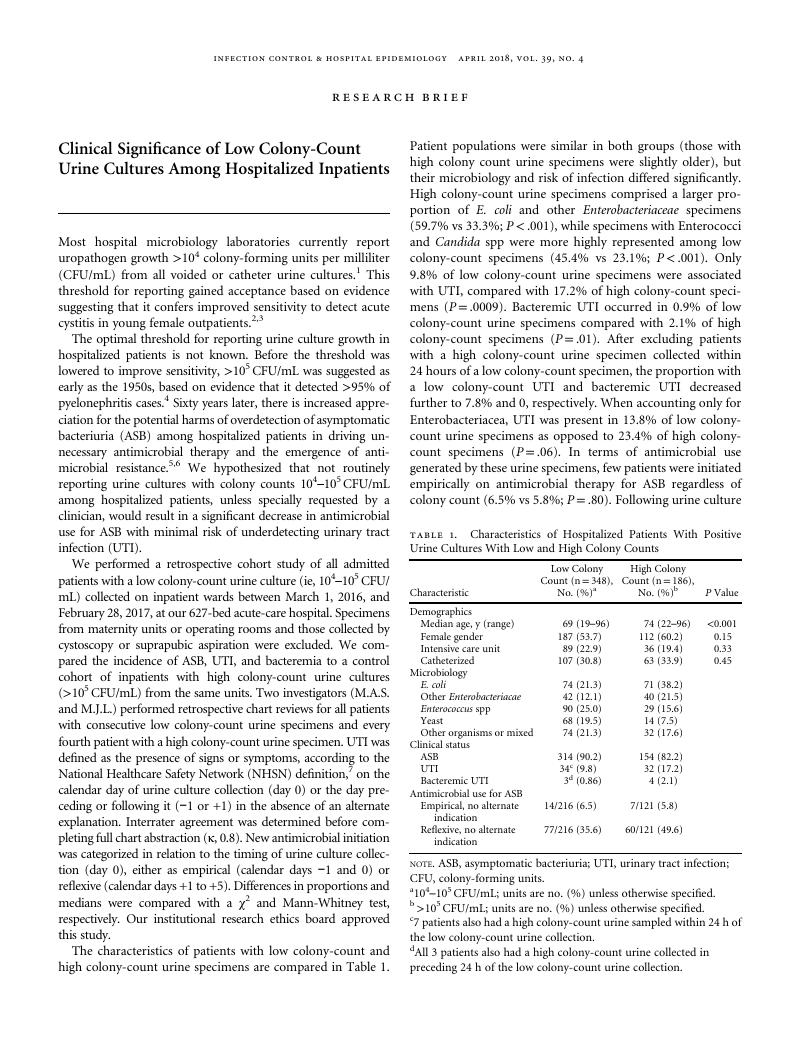Crossref Citations
This article has been cited by the following publications. This list is generated based on data provided by Crossref.
Smith, Marc-Andre
Puckrin, Robert
Lam, Philip W.
Lamb, Michael J.
Simor, Andrew E.
and
Leis, Jerome A.
2019.
Association of Increased Colony-Count Threshold for Urinary Pathogens in Hospitalized Patients With Antimicrobial Treatment.
JAMA Internal Medicine,
Vol. 179,
Issue. 7,
p.
990.
Gabay, Ohad
Cherki, Tal
Tsaban, Gal
Bichovsky, Yoav
and
Nesher, Lior
2022.
The Safety and Impact of Raising the Urine Culture Reporting Threshold in Hospitalized Patients.
Journal of Clinical Medicine,
Vol. 11,
Issue. 23,
p.
7014.



